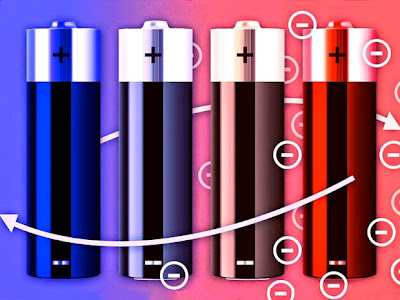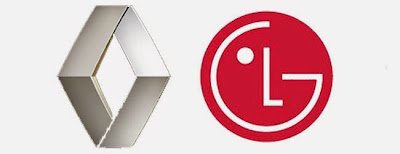The BMW Group celebrates the meeting of the time-honoured and the contemporary at the Concorso d'Eleganza Villa d'Este 2014 with a very special concept: the MINI Superleggera™ Vision. This exclusive interpretation of an open-top two-seater was created by MINI and Touring Superleggera, the tradition-steeped design and coach building house based in Milan.
The MINI Superleggera™ Vision is on the one hand a classic roadster, a compact and agile two-seater, expressing the most minimalist and emotional style of motoring; and on the other hand its electric drivetrain gives the car distinctly modern driving dynamics. In collaboration with MINI, Touring Superleggera™ has designed and built an elaborately crafted, unique model which blends the tradition of classic coachwork construction with the MINI's authentic British styling to create timeless aesthetic appeal.
Modern Britishness meets Italian flair: the iconic design of MINI meets elegant, athletic beauty - interpreted in contemporary style.
Classic Italian body construction and hand-shaped metal sheeting give the MINI SuperleggeraTM Vision a unique emotional appeal. Both on the inside and outside, the form is reduced to the maximum extent so as to achieve a clear focus on the distinctive driving experience.
The interior reflects traditional coachwork construction in terms of materials and styling, combined with the icons of MINI interior design.
High-end materials such as leather, aluminium and black chrome highlight the clear aesthetics of the interior.
Adrian van Hooydonk, Senior Vice President BMW Group Design on the concept: "Touring Superleggera and MINI have much in common: both companies attach great importance to their history and this is something which defines their outward appearance to this day. What is more, they both emphasise iconic design and distinctive solutions. These elements are merged in the MINI SuperleggeraTM Vision to create an elegant automobile which interprets a British roadster under the influence of Italian style and hand craftsmanship."
British design with an Italian accent - the exterior design.
"The MINI SuperleggeraTM Vision elegantly perpetuates what the Classic Mini started 55 years ago: reduction to the essentials. Its energetic, minimalistic design embodies the dynamic essence of an automobile. At the same time it creates unique emotional beauty in combining the past and future of the automotive industry, i.e. traditional coachwork craftsmanship and modern design styling. It was a pleasure for me to design a concept like this." says Anders Warming, Head of MINI Design.
The perfectly balanced proportions indicate at first glance what the electrically powered MINI Superleggera™ Vision has to offer in terms of a driving experience: the stretched bonnet, long wheelbase and cool, short overhangs convey pure driving fun. As in every MINI, the wheels are set widely on the body, promising a high degree of agility. The passenger cell is slightly set back, further underscoring the car's dynamic impression. The overall effect of the MINI Superleggera™ Vision is sporty, elegant and dynamic.
The front of the MINI Superleggera™ Vision features the traditional MINI design icons: two circular headlights and a hexagonal grille define the unmistakable front section, providing a contemporary interpretation of features which have become firmly established over decades. There are also striking classic sports car elements such as a wide track and distinctively curved wheel arches that give the front a dynamic presence. The classic MINI bonnet stripes are three-dimensionally embossed and run on into high-quality polished aluminum accents. The inlaid bonnet harks back to classic British roadsters of bygone days.
Meanwhile the horizontal rib look of the radiator grille adds a classic sporty touch. The fact that it is closed is a discreet indication of the car's electric motor. The two fog lights echo the circular contours of the headlamps, providing a smaller interpretation of them in the radiator grille. The air inlets are also circular, giving the front section a distinctive touch. A flat front splitter made of carbon fibre closes off the front to the road, thereby underscoring the car's sporty statement down to the last detail.
Classic coachwork construction in a cutting-edge interpretation.
The striking element of the side view is the characteristic "Touring" line. It embodies both the high art of coachwork building and classic aesthetics. Surrounded by tight, seamless surfaces, it traces a precise, vibrant movement from the front wheels through to the rear. This reflects the great craftsmanship and longstanding experience of Touring Superleggera in area of body construction: ever since it was founded the company has stood for fine, light sports car bodies. To this day, Touring Superleggera™ shapes large aluminium sheets by hand using the most performing frame structures. The hand-crafted style of construction gives the MINI Superleggera Vision an aesthetic form which would be virtually impossible to achieve by machine manufacture.
"MINI and Touring both believe that proportions are the key factor of beauty, and share the same values of essentiality and innovation" says Louis de Fabribeckers, Head of design of Touring Superleggera. "In this car all unnecessary equipment or decoration is sacrificed, as performance is gained through lightness and efficiency of the bodywork and interior. The Italian touch is in the proportions and the typical waistline."
There are very few gaps in the body since it is constructed from large sheets of metal. The result is a closed look that conveys high-quality elegance. The specially developed exterior paint finish Como Blue, almost liquid in effect, stands for both classic and modern style. It particularly underlines the refined Italian touch of the MINI Superleggera™ Vision. The elaborate rims and the elegant exterior mirrors in long-hole look complete with a mirror base in polished aluminium add exclusive accentuations at the side. Echoing the front section, the discreet CFRP sills underscore the sporty character of the MINI Superleggera™ Vision.
Meanwhile the striking fin defines the look of the rear, adding a touch of extravagance. It gives the MINI Superleggera™ Vision a particular longitudinal dynamics while at the same time embodying the unconventional air of both MINI and Touring Superleggera. Like the "Touring" line at the side, it is modeled with enormous precision. The highlight of the flat, wide rear is the unusual lights: designed in the form of a Union Jack divided in two, they combine functionality and symbolism in a way never seen before. In this way they express the British roots of the MINI Superleggera™ Vision while at the same time emphasising the modern LED technology as already used in the new MINI. A chrome bar demarcates the rear lights at the centre of the rear, making this area a classic British jewellery icon. The CFRP diffuser rounds off the rear to the road in sporty style.
Echoing the exterior - the interior design.
The exterior and interior design of the MINI Superleggera™ Vision merge seamlessly. Only a surrounding shoulder line in polished aluminium visually separates the exterior and interior from each other. The border creates an encircling, sporty gesture that consistently perpetuates the clear elegance and generous surfaces of the exterior.
In its styling and in the look and feel of its materials, the interior design celebrates the tradition and the essence of classic coachwork construction. It reflects how the automobile was created: the essential features are quoted - the untreated aluminium sheeting and the tube-shaped structural elements - and they are made visible in the interior by means of a high-quality interpretation. This is most striking in the dashboard. The latter is created from a single aluminium sheet and has been left in the state the automobile body would look like without a paint finish. The generously sized unpainted surfaces and the clearly visible hand craftsmanship of the dashboard go together to reflect the skilled artistry of the coachbuilders. The doors and the sporty 3-spoke steering wheel likewise reveal the traditional method of construction. The structural elements in the doors form a Union Jack, discreetly indicating the British origins of the MINI Superleggera™ Vision.
The Center Instrument in the middle of the instrument panel draws on MINI design styling and has been extended for the MINI Superleggera™ Vision to include a touch-sensitive control element and two circular instruments with metal surrounds on the right. In addition to the analog clock on the far right, the second framed instrument activates the camera which is integrated between the driver and front passenger seat. It has the function of capturing those particularly worthwhile moments on the road.
Classic and modern to equal degrees - colour and material design.
The classic materials aluminium and leather in a virtually untreated state define the reduced aesthetics of the MINI Superleggera™ Vision in the interior. Below the shoulder covered in brown leather in the classical color Sabbia, the materials are kept to the essentials. The structural elements in the doors and centre console are finished in high-quality black chrome, exclusively set apart from the aluminium surfaces and the raw, matt textured paint finish in the footwell area. This deliberately contrasting mixture of structured surfaces and high-end materials gives the MINI Superleggera™ Vision an exceptional charm. The sporty bucket seats are reminiscent of bygone MINI motor racing achievements and are covered in high-quality black leather. True to the MINI Motto "Hide & Reveal", accentuations in Misty Magenta provide a touch of Italian flair in tongue-in-cheek MINI style in concealed spots such as the two hot air outlets under the instrument panel and inside the door openings in the structural elements of the doors.
Coachbuilding in 2014.
Since 1926, Touring Superleggera is forerunner of advanced automotive design and custom coachbuilding. The company is one of the rare firms offering the whole in-house productive cycle from the first sketch, all the way through surface engineering and structural analysis, style models and prototypes, to turn-key, low-volume production of special bodywork.
"We are delighted that MINI wanted to stimulate an independent initiative and particularly Italian design for the first time", says Piero Mancardi, CEO of Touring Superleggera. He continues: "This project also shows MINIs attention to preserving and nurturing the skills of craftsmanship incorporated in modern coach building."
The MINI Superleggera™ Vision epitomizes the potential of "Carrozzeria" in today's automobile industry: blending creativity and flexibility with rigor and respect of high standards. The result is a car of classic beauty that is also state of the art.

.jpg)









